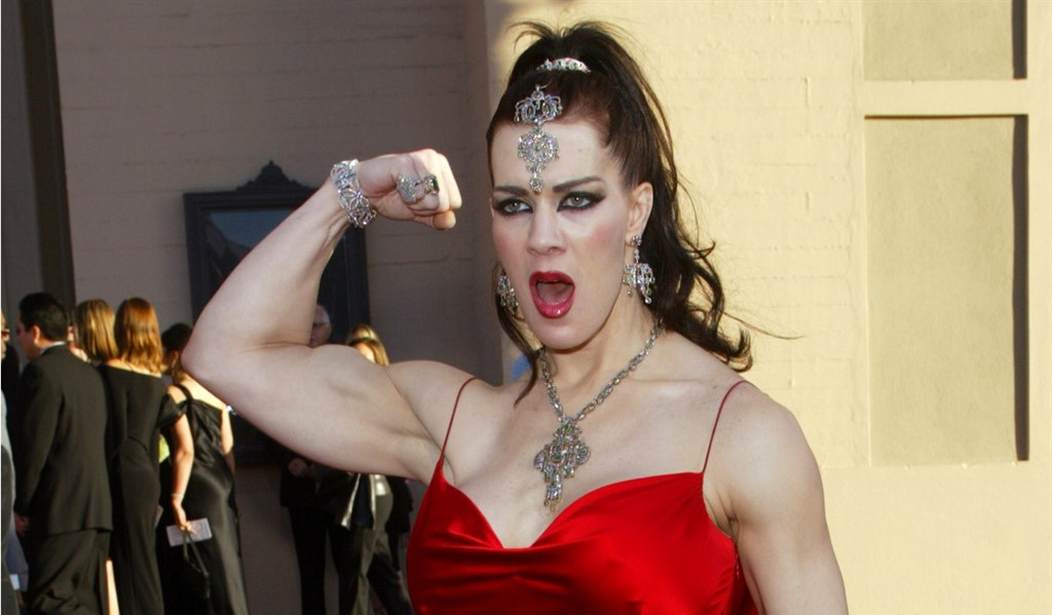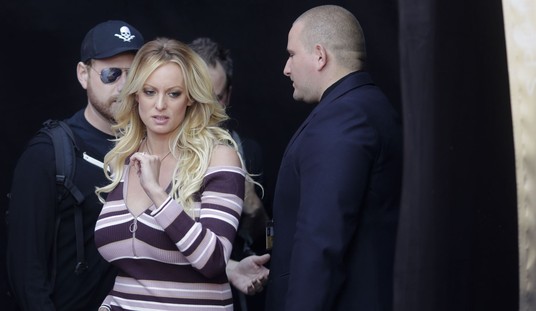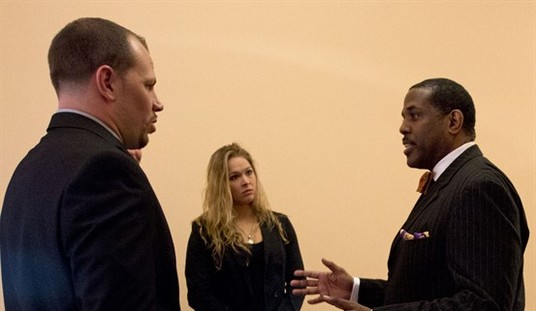I have long been hostile to the aggressive neo-Marxist movement known as feminism in all its multiple “waves” of societal disruption and rhetorical mendacity, its invasion of the family court system, its intellectual corruption of the universities and the professions, and its savage destruction of the marital bond.
One of the key planks in the feminist platform involves asserting the superior moral nature of the female sex over the more primitive moral nature of the presumed male oppressor, aka the patriarchy. Women are apparently gentler, more empathetic, less prone to violence, more politically astute, better leaders, and sincere advocates of peace, kindness, justice, and harmony, thus constituting a more evolved evolutionary stage than men.
Could this be true? In order to conduct empirical research by studying a particular focus group, I spent several days examining the pageant of women’s wrestling which, like women’s soccer, softball, and hockey, should presumably furnish proof of a refusal to engage in spectacles of gratuitous roughhousing.
The evidence was dispositive. Female wrestlers were no different from their male counterparts. Why should they be? We know, for example, according to Statistics Canada, that intimate partner violence (IPV) is more or less equally shared by both sexes — not much different from the carnage we observe, however simulated, in both male and female professional wrestling. Indeed, I have seen female blood spilled in the ring (blading or hardway), whether by intention, accident, or the result of bitter rivalries. I have seen women flinging one another ferociously to the mat, moonsaulting one another like pancakes, aiming punches, kicking one another in the midsection, faceplanting, choking, gouging eyes, tearing nostrils, biting fingers, and trading taunting insults into the bargain — examples of raw brutality that feminists stress belong in the masculine domain.
To take just two specific examples from a myriad that struck my attention in so abbreviated a survey:
Stephy Slays is a fan favorite, an attractive young woman whose main function, it appears, is to be routinely pummeled into insensibility. She is what is known in the trade as a “glorified jobber,” one who almost constantly loses. Pitted against the WOW champion, aka the Beast, Slay was repeatedly slammed into the turnbuckle, strangled in the ropes, stomped on, tossed about like a rag doll, rammed face-down onto the mat, and finally supplexed into apparent or real semi-consciousness prior to a pinfall.
In one of the most-watched matches around the world, Charlotte Flair destroyed former WWE champion Ronda Rousey, beating her brutally about the head and body with a stick and garroting an immobile Rousey by inserting her head in the gap between the back and seat of a steel chair and stepping on it. Rousey had been thoroughly Pillmanized and needed to be treated by a team of medical people. Flair, who is known in the business as a “heel” (villain), contrasting with a “face” (heroine), is notorious for her signature finishing move, the figure 8 leglock, which forces visibly painful — or, as it may be, theatrical — submission from a writhing opponent.
These events preceded and followed similar demolitions carried out by women with names like Tormenta, the Disciplinarian, Wrecking Ball, Awesome Kong, Taha Valkyrie, Deathmatch Mickie, Masha Slamovich, and many others. Interestingly, a considerable portion of the spectators are women — the female gaze is on par with the so-called male gaze. Even children are involved. In one degrading episode, a little girl was coaxed from the audience to deliver several blows with evident delight to a partially comatose wrestler propelled from the ring.
Of course, most of it is pretend, or what is called kayfabe, a web of illusion disguising a contrivance, performers engaging in a believable storyline or feigned event. But not everything is scripted. As mentioned, some of what takes place is accidental and some is vehemently personal, as the wrestling lore attests. (In the lingo, they “got beef.”) More importantly, the entire kayfabe tableau is deliberately orgiastic. Though much of the blood, as it were, may be ketchup, it is meant to provoke a sadistic pleasure in carnal battery. Even the male referees are not spared, some flung from the ring, others rendered prostrate, cowering before a giantess with bared teeth and glaring eyes. The scenario is almost mythic. The mayhem for the most part may not be real; nonetheless, it entails a choreography of uninhibited violence.
Although female wrestlers are obviously catering to a male audience, thus appealing to the presumably more primordial instincts of men, they are equally complicit in the traits that feminists affect to abhor. And, as noted, there are many women in the audience who enjoy the fracas they are watching. I recall a typical wrestling event I once attended as a young boy growing up in a small Quebec town. In one match between two burly macho specimens, the winner lifted the hem of his prone antagonist’s trunks to reveal what lay beneath. The women seated at ringside went into paroxysms of delight. (I cannot in all decency repeat what they said.) In the main event, Quebec champion and golden boy Johnny Rougeau was carried out on a slab of wood, bleeding profusely from the head. No kayfabe here. Several women gathered around him with fascinated relish. These were instances I never forgot.
Women clearly have a taste for blood and voyeurism, which is a common human feature — why else do we slow down at road accidents to observe the wreckage and gore? But one thing we can say for certain is that the female wrestlers at the WWE and WOW, in the havoc they indiscriminately strew about them, may be women, but they are not ladies. Neither, for that matter, are the feminists, given the hormonal rage they exhibit in their attack on men and the voyeuristic pleasure they obviously take in male suffering. Propriety is not their forte, as it is among the better sort. They remind me of the maenads gleefully tearing apart poor King Pentheus in Euripides’ The Bacchae.
I readily acknowledge that the feminist dogma, at least as it manifests from the time of Elizabeth Cady Stanton and the Seneca Falls Convention (1848) to the modern period of Valerie Solanas, Mary Daly, Mona Eltahawy, and many others, is more complex than I have indicated. (Solanas is much idolized among feminists for having shot Andy Warhol.) In any case, a short article is not a suitable frame for a detailed review. For those wanting a more resource-rich analysis of the feminist pathology, I would suggest consulting my wife Janice Fiamengo’s video productions (The Fiamengo File, or its 2.0 successor after the original was banned by YouTube). Her book Sons of Feminism and an increasingly popular Substack newsletter will serve equally well. She will be teaching a course for Jordan Peterson’s planned university, the Peterson Academy, on the history of feminist thought, its major and most influential theorists, and the socially destabilizing travesty of feminist doctrine, which would be well worth checking out.
Related: The Morning Briefing: Riley Gaines Is the Hero Sane America Needs This Pride Month
But perhaps the essence of the issue can be summarized in a thumbnail. Feminism has long argued that women can perform in all respects equally with or even better than men, and judging from the evidence provided by the women’s wrestling federations, one would be hard put to deny the claim — at any rate, as far as wrestling goes. It is, admittedly, a narrow sample. Although there is considerable crossover, especially in the professions, women’s work and men’s work are inherently different. Few women can be found laboring in the mines, cleaning sewers, collecting garbage, fishing for herring and salmon in the stormy North Pacific (like Janice’s dad), logging, operating cranes, working on rigs, fighting forest fires, driving 18-wheelers across vast and lonely distances — the list is endless. The feminist claim is apocryphal. Parity is not the issue and neither is superiority. Reciprocity is.
Evidently, the matriarchy does not take a back seat to the patriarchy, apart from the fact that such categories are merely forms of weaponized rhetoric and its polemical terminology. Be that as it may, if we are to accept the feminist argument at face value, we would have to conclude that the matriarchy is no less “toxic” than the patriarchy.









Join the conversation as a VIP Member